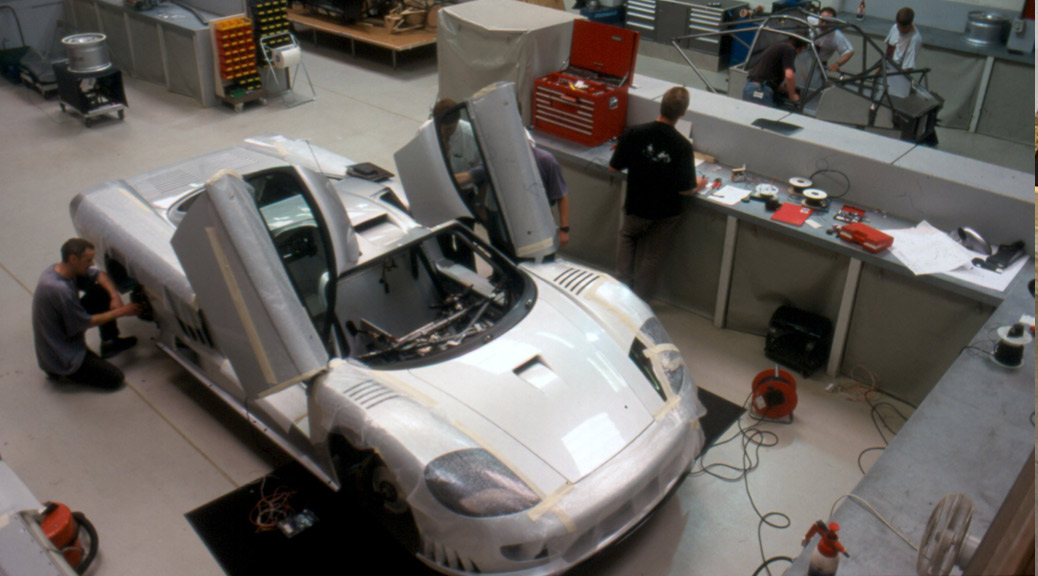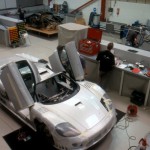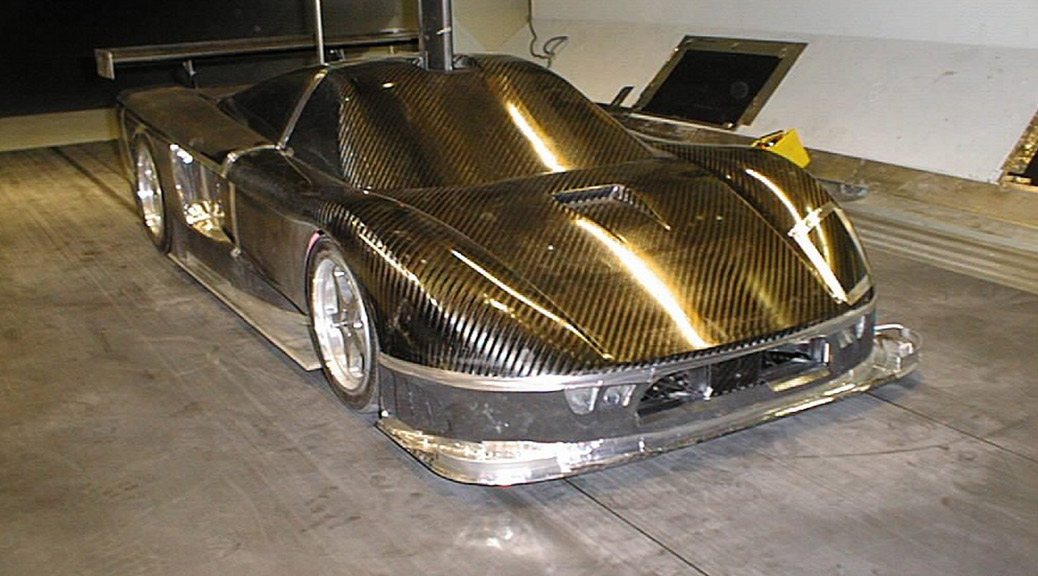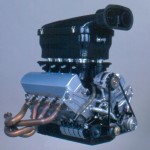By: DUTCH MANDEL on September 25, 2000
Original Article: AUTOWEEK, VOL. 50, ISSUE 40
With his six-figure S7 supercar,
Steve Saleen aims to prove he’s not just another pretty tuner
The question resonates like a church bell at high noon: Does the world need another supercar? If Steve Saleen is tugging the rope, the answer is listen. And watch.
At Monterey in late August, we watched Saleen unveil the S7, his latest-and to date, grandest-effort in the specialty car manufacturing universe. S7 is aeroslick and represents for Saleen the culmination of more than 17 years of car building and car racing efforts. The recipe for S7, while simple, is nonetheless ambitious: It bakes in tried and true manufacturing processes with robust performance hardware. Its skin is wind-tunnel honed, its interior is a combination of utilitarian and exotic design. How well it runs is a question that must wait until the second quarter of next year when Saleen himself promises customer cars will be ready for delivery.
Sign up today and be first on your block to get yours for $375,000.
S7, Saleen touts, is going to be a supercar unlike any other. While that is an automotive mantra we’ve heard before-can you say Bricklin, DeLorean, Mosler, Weigert?-there are reasons to believe some of Saleen’s claims. What he says has a throw-weight behind it others did not. Take for example Saleen’s small-batch manufacturing experience as well as the ever-important financing courtesy of mega-busi-ness guru Tony Johnson, head of Hidden Creek Industries, a $6.5 billion company.
That Steve himself asserts that S7 will have performance superior to that of the upcoming Mercedes Vision SLR supercar is reason enough to raise hackles of skepticism. That he plans to charge half again the price of the SLR’s reported $250,000 for his car leaves us flat dumbstruck. Still, admire his chutzpah.
The S7 is so named for a combination of Saleen and the car’s 7.0-liter powerplant displacement. Though targeted at a highly rarefied market, its genesis is aimed at driving home a much larger point: That Saleen does not make “tuner” cars.
Saleen tells all who’ll listen that he’s a specialty manufacturer who undertakes far greater effort and overcomes greater obstacles than those who merely bolt on fiber wings or pop in performance chips. Aside from completely stripping each car with which he begins the Saleen transformation, his company has learned to leap through state and federal regulatory hoops, create shop and owner manuals, establish a dealer network and provide customer warranties, to name just a few steps. These efforts go well beyond what tuners can and will do for customers; they are the efforts of carmakers. By the end of this year, Saleen will have built in his history a total of 8000 cars.
“Given what we’ve done with Mustangs-our touching every element on these cars-this S7 is the next step,” says Saleen. “We were convinced [we could do this project] after we showed the Saleen SR, a Mustang derivative that debuted at the L.A. auto show, which had everything changed on it but the window glass.”
According to Saleen, that car was well-received, along with its $158,000 price tag. “That [SR] was our catalyst for the next generation of cars.”
His next-generation car, this car, starts with a simple tube-frame chassis and honeycomb construction, a basic layout with a long wheelbase and compact drivetrain that allows for a roomy interior. Saleen subcontracted chassis design and manufacture to Ray Mallock Ltd., a British firm that specializes in building race-winning touring cars.
Reasons for dishing out the chassis were many. First, RML knows racing; it has won multiple British Touring Car Championships-driver and constructor-in recent years. (No wonder S7’s chassis is something like you’d see in the sports car racing world.) Because it knows racing, it knows design, manufacturing speed and flexibility-keys to a project like this. As is the case with many race car builders, RML wants to grow outside its competition confines and into the “real” car world. Finally, RML gives Saleen a ready-made European delivery outlet for these cars; Saleen plans to have S7 sold worldwide, and as such it has been engineered with both left- and right-hand-drive models.
RML will supply Saleen with a complete chassis and suspension with uprights, parts that are broken down and air-freighted to Saleen’s Irvine, California, manufacturing center. Once in California, Saleen will drop in a Ford 7.0-liter, all-aluminum 427 engine mated to a six-speed ZF transaxle.
As for performance, well, Saleen makes super claims: The S7’s 550-horsepower engine will move it to 60 mph from a standing start in less than four seconds, with a top speed in excess of 200 mph. “The drivetrain is a derivative of both our racing and production knowledge that we’ve gained over 17 years,” Saleen says.
The S7’s interior can best be described as spartan elegant. Spread throughout is Connolly leather and suedes, brushed aluminum touch pieces and ever popular “jewel-like” gauges. According to Saleen, the effort is “to put a premium on the cockpit without compromising performance.” If you have a chance to sit in an S7, you’ll notice the cabin is slightly asymmetrical. The effect is to have the driver sit more inboard. But once in S7, you’re there.
“If you’re looking for ease of entry and exit, you may want to get a [Ford] Focus,” says Saleen with a chuckle, and adds that “once in the car, you’ll be well wrapped.” Call it a nod to its racing heritage, but S7 has a removable steering wheel that clearly aids getting in and out.
A rooftop scoop forces cooling air into the engine, which may be key for performance cars, but does little to increase rearward visibility. To that end, Saleen incorporates a rearward-mounted television camera and couples it to an in-dash monitor that gives the driver a clear view of what evil may lie behind S7.
As for its exterior design, it was a semi-collaborative effort between Saleen himself and longtime Saleen designer Phil Frank. Still, the absolute shape is the result of many hours working with a one-third-scale model in a rolling plane wind tunnel. Obviously, not an inexpensive undertaking, but one Saleen sees as paramount to making S7 both visually rakish and stable at high speeds.
Saleen sees S7’s competition measured two ways: price and performance. Naturally, less-expensive supercars are the Lamborghini Diablo, Jaguar XJ220, Lotus, Porsche and some Ferraris. Additionally, he points to the aged McLaren F1, a $1 million technological toy, as the kind of car his might run for pinks.
Saleen sees a three- to four-year production run for S7 with a total of 300 to 400 built for world-wide sale. Among his targeted buyers are newly rich e-commerce mavens, but he’ll gladly sell to anyone with the cash.
“The car is built with a big frame, and that will allow for the professional athlete and that level of demographic,” he says.
S7 will not be able to push aside its racing heritage. Eventually it will make its way to competition on the racetrack in sports car racing-the arena where Saleen feels most at home.
When Steve talks, he shifts between the first and third person. The effect is disconcerting, but what to do if your name is on the car? “The total concept is 100 percent Saleen. We wanted to do a high-performance, worldwide vehicle.
“I’ve wanted to do a mid-engined, two-seat sports car for a long time. We have been making a hard push to get people to understand Saleen is not a tuner. We want to produce vehicles as we do now-from cradle to grave-and this is a proof of concept for what Saleen has already done.”
Sorry to disappoint, Steve, but proof of the status you seek comes later, when and if the current iteration of Saleen is still in business, having made enough money to tool up and manufacture the car that comes after S7.



















